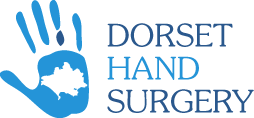Elbow Arthroscopy
This procedure involves inserting a small telescope (arthroscope) with an in-built light source and a camera into the elbow joint via a very small incision (keyhole surgery).This allows the surgeon to view the inside of the joint via a television monitor in theatre. The elbow joint is very complex and elbow arthroscopy can be technically more challenging for the surgeon than performing keyhole surgery on other joints. Specially-designed instruments are inserted through other small incisions, providing the ability to treat a wide range of conditions. The telescope used is smaller than that used for arthroscopy of the shoulder or knee, but still provides an excellent view of the inside of the elbow joint.
Who needs it?
The commonest conditions that require an arthroscopic assessment include arthritis (wear and tear), loose bodies in the joint (pebble-like pieces of bone or cartilage) or elbow stiffness. Less commonly elbow arthroscopy can be used to assess and treat elbow fractures or tennis elbow.
Is elbow arthroscopy painful?
The (3 or 4) small incisions are closed with sutures or steristrips, and a supportive dressing is applied.
Local anaesthetic is injected into the elbow at the end of the operation which means that there should be little pain for the first few hours. Once this wears off, however, there may be some discomfort for the first few days. Simple painkillers may be required to control this.
What are the potential complications:
These are the potential risks of Elbow arthroscopy:
Infection – Uncommon occurs in approximately 1% of operations and usually treated very successfully with antibiotics. It very rarely would require further surgery.
Nerve Injury– The risk of nerve injury is slightly higher with this type of keyhole surgery when compared to other joints such as the knee or wrist. This reflects the complex anatomy with several nerves crossing the elbow joint. This will be discussed further at your consultation.
Painful/Tender/thickened Scars – the vast majority of patients complain of some discomfort around the scar but it generally resolves with time. Wound care and desensitisation as directed by your physiotherapist/hand therapist will improve this.
Stiffness – Operations to the elbow may cause stiffness, this can be minimised by working closely with your hand therapist and getting your hand moving as early as possible.
Incomplete resolution of your symptoms – this may occur if you have severe changes within the elbow, or have had the symptoms for a long time.
CRPS – complex regional pain syndrome, this is an uncommon but serious complication. It can on rare occasions leave you with a less function hand with on-going pain stiffness and swelling. See section on CRPS. The exact incidence or rate of CRPS after surgery is unknown. It probably occurs in a significant form in approximately 1-2% of cases.
This list is not exhaustive and individual risks will be discussed with you at your consultation.
How long does it take to recover from elbow arthroscopy?
The dressings will be removed at 10-14 days and you may then be referred to the Hand Therapist to commence an exercise programme. You may not be able to drive for at least 2-4 weeks following surgery.
How much you are allowed to do will be determined by how quickly the elbow recovers from the surgery, and what the underlying problem was, and how successfully this has been treated. Commonly, it will take between 6-12 weeks to fully recover.
